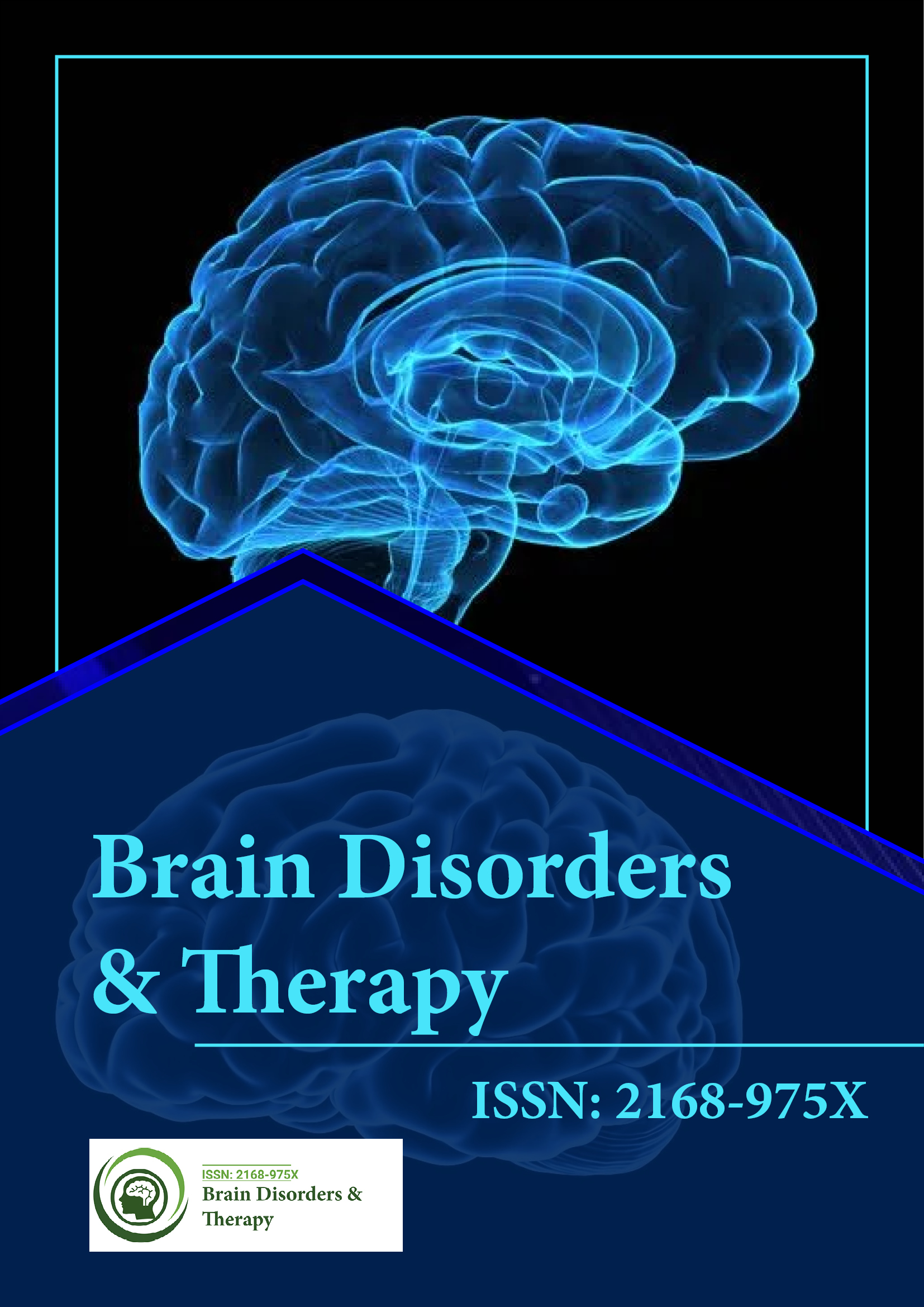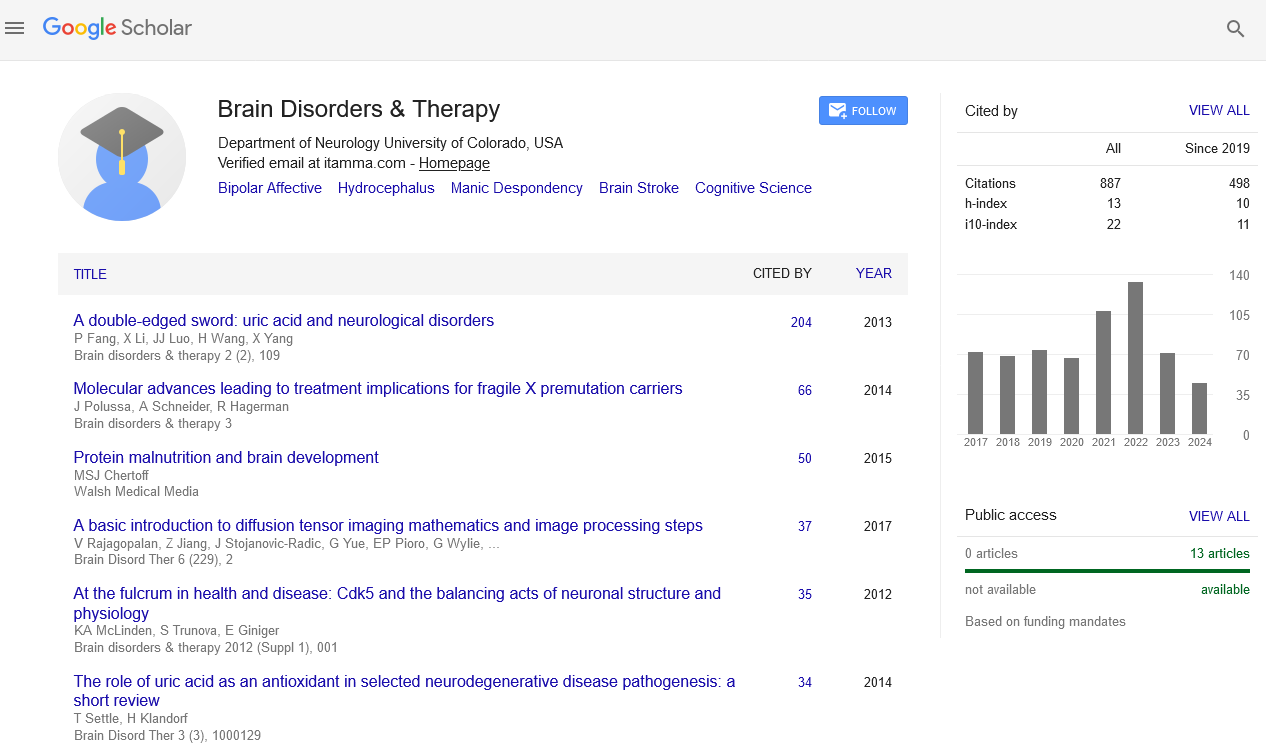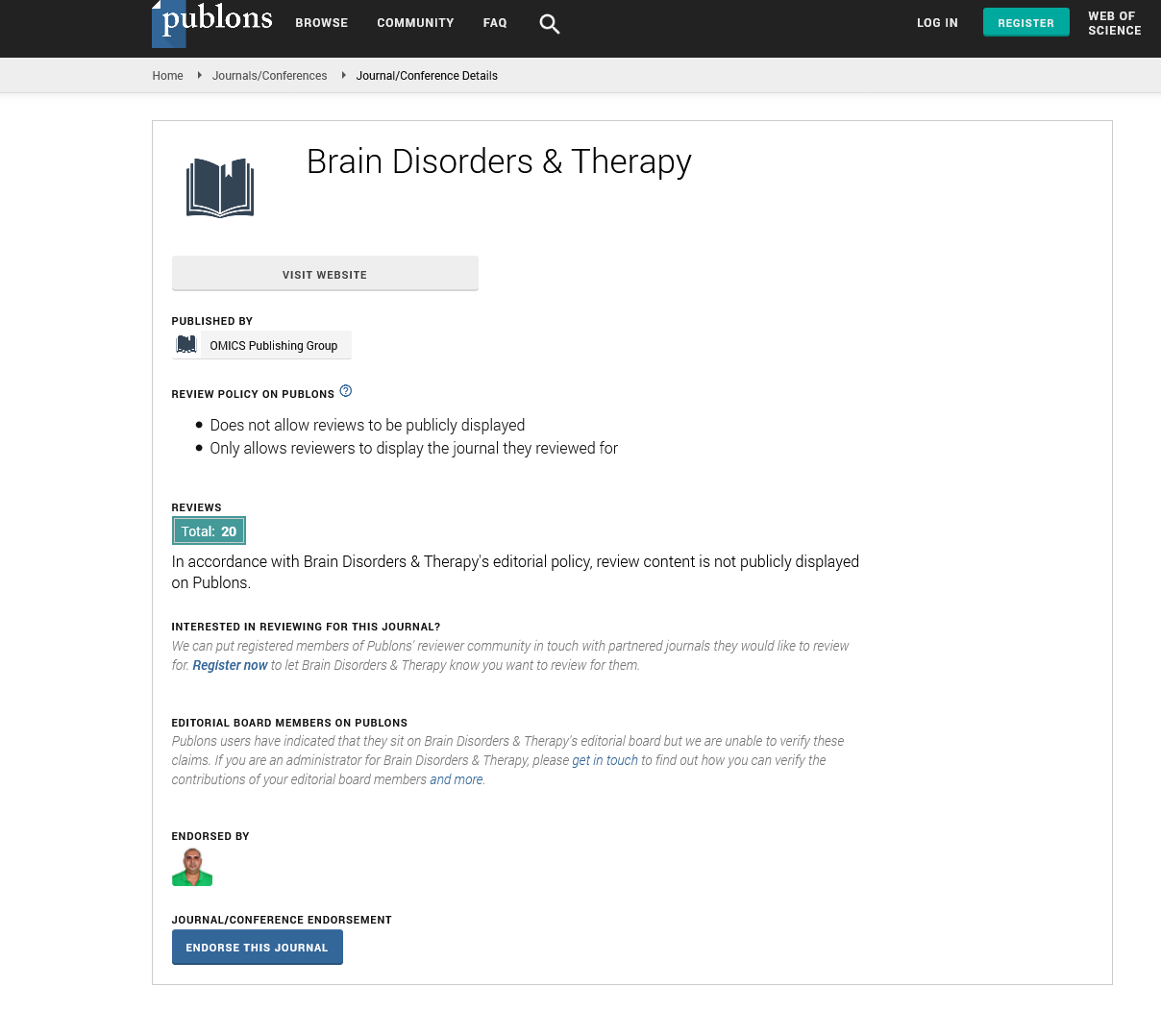Indexed In
- Open J Gate
- Genamics JournalSeek
- JournalTOCs
- RefSeek
- Hamdard University
- EBSCO A-Z
- OCLC- WorldCat
- Publons
- Geneva Foundation for Medical Education and Research
Useful Links
Share This Page
Journal Flyer

Open Access Journals
- Agri and Aquaculture
- Biochemistry
- Bioinformatics & Systems Biology
- Business & Management
- Chemistry
- Clinical Sciences
- Engineering
- Food & Nutrition
- General Science
- Genetics & Molecular Biology
- Immunology & Microbiology
- Medical Sciences
- Neuroscience & Psychology
- Nursing & Health Care
- Pharmaceutical Sciences
Marchiafava Bignami disease (MBD) and diffusion tensor image (DTI) tractography
International Conference on Brain Disorders & Therapeutics
August 24-26, 2015 London, UK
Chukwueke P N1,2, Kleiman A1,2 and Pisinski L1,2
├?┬╣Harlem Hospital Centre, USA ├?┬▓Columbia University Medical Centre, USA
Posters-Accepted Abstracts: Brain Disord Ther
Abstract:
Introduction: MBD is a rare central nervous system (CNS) disease characterized by demyelination of the corpus callosum mostly found in men with alcohol use disorder and malnutrition with cases reported worldwide across all races. The onset of the disease may be sudden presenting with stupor, coma or seizures while some may present with gait abnormality (spasticity), psychiatric problems, hemiparesis, aphasia, apraxia and incontinence with a resultant high morbidity and mortality rates. Case Description: Patient is a 30 year old left handed African-American with history of hypertension, diabetes type I, hypothyroidism, alcohol use disorder, who presented with c/o altered mental status, urinary incontinence, slurred speech and left-sided weakness. Work up was done to r/o acute ischemic stroke or hemorrhage, other causes of encephalopathy, seizures with post ictal state and all were negative. Lab findings were significant for anemia and hypoalbuminemia. He was followed by psychiatry for suicidal ideation, depression and agitation, CT brain without contrast was unremarkable but MRI brain showed bilateral centrum ovale restricting lesion with restriction in splenium of the corpus callosum.The diagnosis of MBD was confirmed with DTI Tractography which showed significantly diminished commissural fibers extending to the right central semiovale lesion, near absent or significantly diminished commissural fiber extending through the corpus callosum indicating demyelination. Management included empirical management for meningitis, seizures followed by management of malnutrition with dietary supplements, multivitamins and rehabilitation. He responded to treatment evidenced by resolution of his presenting symptoms and by day ten of hospitalization, he was cleared and discharged to home to follow up in the outpatient clinic. Discussion: MBD is often an incidental diagnosis with high morbidity and mortality. This is different from previous cases because of earlier onset as opposed to onset around age 45, rapid recovery and minimal disability as he could work independently before discharge from hospital. This case also shows added benefit of the DTI tractography in the diagnosis of MBD.
Biography :
Email: kaypc2002@yahoo.com


